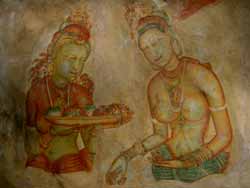 |
| On the western and northern sides of the steep rock face runs a
gallery or pathway which provides access to the seemingly inaccessible
summit. Shielding this pathway is a 9 1/2 ft. plaster wall, so highly
polished, that even today, after fifteen centuries of exposure to
sun, wind and rain, one can see one's reflection in it. Hence the
name "Mirror Wall". |
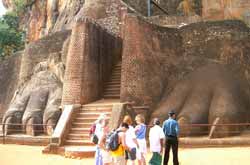 |
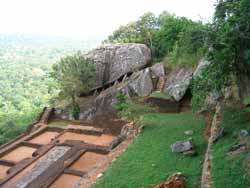 |
|
 |
The 8th Wonder of the World |
| |
|
 |
The palace in the Sky |
 |
The 200m high Lion Rock. |
 |
The best preserved city centre in Asia from the first millennium. |
 |
It was a Royal Citadel for more than 18 years. |
 |
declared a World Heritage site in 1982. |
| One story remains from many interpretations of the Sigiriya period |
5th Century AD
King Kasyapa (477-495 AD) left Anuradhapura and built for himself at Sigiriya,
a palace an city modelled on the mythical abode of "Kuvera" God of Wealth. |
| In a sheltered pocket on the western face of the Sigiriya rock, approached by a spiral stairway,
are the famous frescoes. Epigraphical evidenced refers to the existence of 500 such portraits, but only
19 remain today. |
| |
| |
| The pleasure garden of the western side of the rock is studded with ponds, islets, promenades
and pavilions. Some underground and surface drainage systems have been discovered during excavations.
The wall abutting the moat encircling the fortress is one of the most arresting features. |
|
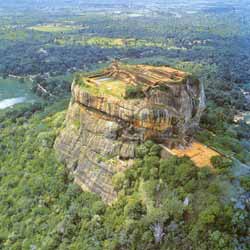 |
| The summit of the rock is nearly three acres in extent. The outer
wall of the palace which is the main building was constructed on the
very brink of the precipice. There were gardens, cisterns and ponds
laid out attractively. |
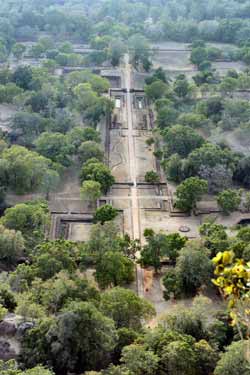 |
| |
|




